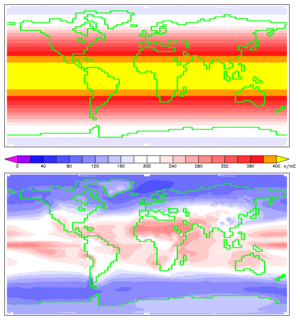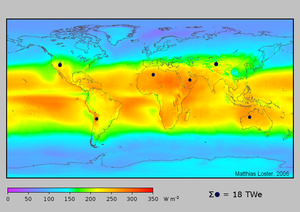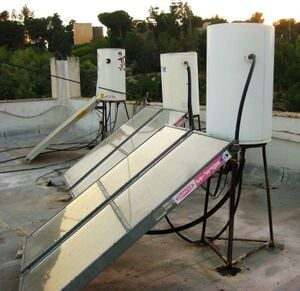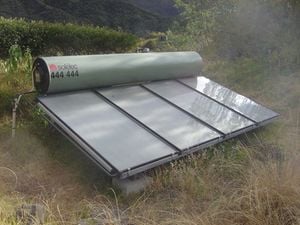Introduction
Solar Hot Water describes active and passive solar technologies that utilize the sun’s freely abundant solar thermal energy in order to heat water for a desired application.
If you have ever felt hot water trickle out of a garden hose that’s been sitting in the sun, you’ve experienced solar hot water in action.
Essentially, a solar hot water system is made up of a solar thermal collector’, a well-insulated storage container, and a system for transferring the heat from the collector to the container vis-à-vis a fluid medium, which in some circumstances is the water to be used itself.
Applications
Being as there are on a global scale near countless applications using domestic, commercial and industrial hot water, there are also many opportunities to apply solar thermal technologies to heat this water. Solar hot water is not a new phenomena and was in fact widely used in the United State up into about the 1920's when cost-effective and consistent hot water systems using gas or electricity moved the technology towards it current position in the market.
But today the market is changing, and both the economic and environmental costs associated with using gas and electricity to heat water is being challenged by both more efficient, less costly conventional systems
Background
Hot water is considered by some to have less application in the field of appropriate technology and to mostly be a luxury afforded the developed world. One text on the subjects suggests that what hot water is needed in the "3rd World" can be heated using a fuel such wood while simultaneously heating their home. Such dismissals are dangerous on two counts:
- First, if appropriate technology is at all concerned with reducing waste and increasing efficiency in use of precious natural resources then there appear to be many opportunities to do so using solar thermal energy and technologies that utilize itin the context of sustainable development for 1st, 2nd or 3rd.
- Second, and perhaps imperatively, the potential to displace the ecological and social externalities associated with [conventional methods for heating water] in the more affluent and developed regions on the planet where there is a path dependency to use hot water regularly and in abundance, even for such luxuries as long, hot showers, clothes washing and heated tubs and pools is extremely important for many SDHW applications are cost-effective and available and thus there could be a significant reduction in the size of a regions Ecological Footprint associated with conventional means of heating water (site Wiki for conventional hot water).
Appropriate Techology
System Types
Availability of Solar Thermal Energy
Direct solar heat gain is one of the most efficient ways to heat water (in terms of energy/waste), as it requires no energy conversion, unlike electric-resistance heating or fuel burning. It is a simple transfer and concentration of heat energy from one place to another.
Hot water can be used for a number of applications, including sanitation (it's easier to wash a lot of things with hot water), and space heating.



